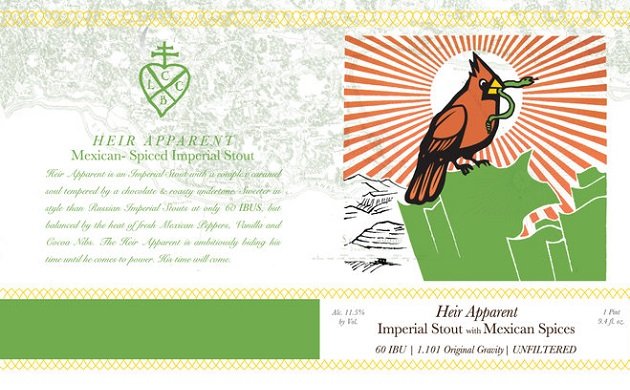
Holiday beers are predictably rich, dark, and spiced affairs, often laced with festive seasonings like cinnamon, ginger, nutmeg, and other warming flavors much appreciated during this coldest and darkest part of the year. This week’s featured beer – Heir Apparent from Lickinghole Creek Craft Brewery of Goochland, Virginia – is a Mexican-spiced imperial stout incorporating three of those usual suspects – cinnamon, vanilla, and cocoa nibs – making it a properly sweet choice for the Christmas, Hanukkah, Yule, the winter solstice, or any other midwinter holiday you find yourself celebrating next week. Unsuspecting revelers take heed, however: while looking for all the world like any other strong stout, Heir Apparent slips in a little extra holiday warmth courtesy of fruits of the genus Capsicum, better known as chili peppers.
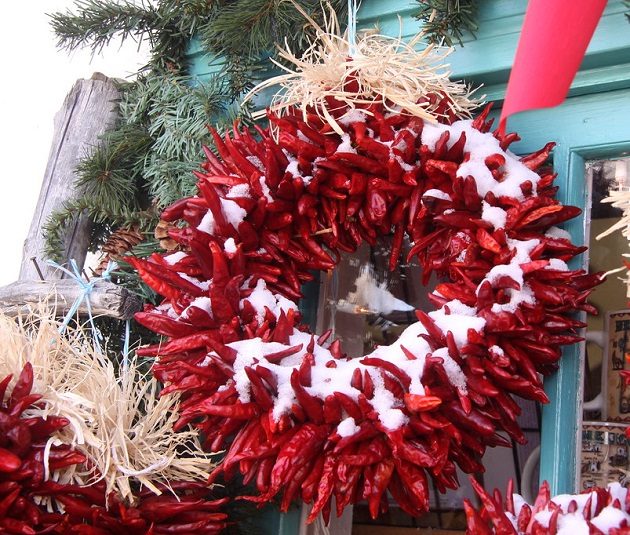
As botanical holiday décor, hot chilis may seem at odds with Victorian traditions of holly and ivy, but in some pepper-growing regions, the fruits of the chili harvest are fashioned into alarmingly vivid Christmas wreaths.
Historically, imperial stout was a potent export specialty of British breweries in the nineteenth century, brewed especially strong to survive the maritime journey across the North and Baltic Seas to markets in the Russian Empire. But with its chili and cocoa flavors, the imperial lineage of Heir Apparent is decidedly more Aztec. Cocoa (or cacao) was a sacred plant in ancient Mesoamerica, reputedly discovered by the god Quetzalcoatl, who found it concealed within a mountain in a trove along with other treasured botanical foods.
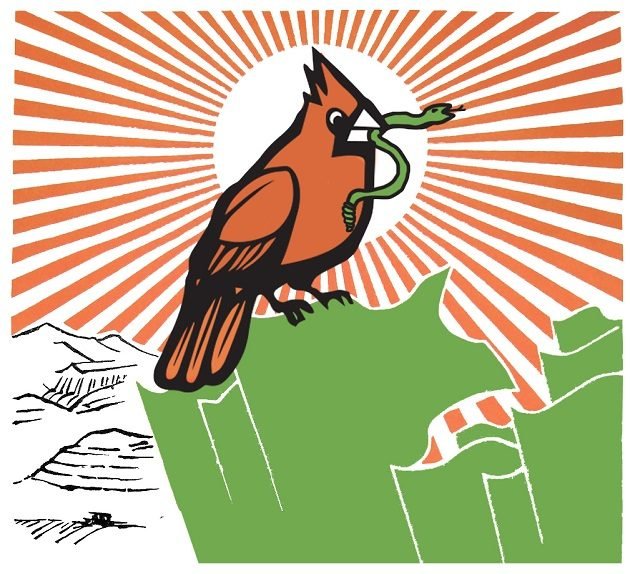
The sun never sets: Imperial stout was originally brewed for the tsars, but the flavors of Lickinghole Creek Craft Brewery’s Heir Apparent Mexican Spiced Imperial Stout are more indebted to the Aztec Empire. (And is that rising sun motif behind the cardinal adding another layer of imperial confusion with a nod to Japan?)
While the Western world today mostly enjoys chocolate in confectionery form, heavily adulterated with sugar, the indigenous people of Mexico mashed cacao beans into a paste and mixed with water to make a bitter, frothy beverage used in religious rituals and enjoyed as an aphrodisiac. In Mexico today, a corn masa-based chocolate drink known as champurrado is a descendant of such early Aztec brews. This hot, soothing beverage is particularly enjoyed at Christmastime at the onset of cold weather, often dosed with cinnamon, anise, and vanilla.
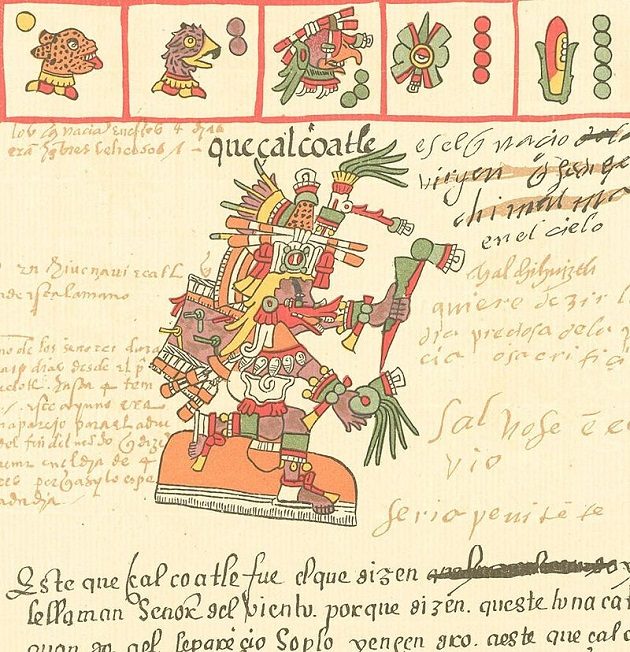
Quetzalcoatl, the mythical finder of cacahuatl, the “bitter water” of the Aztecs, as depicted in the Codex Telleriano-Remensis.
Wouldn’t you much rather see this handsome feathered serpent of the Mesoamerican pantheon of gods in a Cadbury ad, instead of a bunny?
Like chocolate, chilis also come from Mexico and the cuisine of that country ingeniously employs both ingredients in a variety of savory and sweet foods – sometimes even in the same dish, as in the famously rich and complex mole poblano. While the idea of a chili-spiked beer may take some getting used to for some drinkers, Heir Apparent playfully riffs on these classic Mexican flavors in a well-made, full-bodied imperial stout. There’s more than a hint of spice in the nose, with sweet vanilla, woody cinnamon tones, and a tingly whiff of fruity heat mingling over the distinct aroma of cocoa. A forgivingly gentle nip of chilis provides a piquant counterpoint to traditional stout flavors of milk chocolate, dark toffee, and roasted malt, while the bittersweet mocha finish is accented with a dash of licorice and herbal hops. A peppery chili kick is present throughout without being overbearing, and kept in check by robust chocolate and caramel flavors, making Heir Apparent a lovely if slightly unorthodox dessert beer, postprandial treat, or nightcap on a chilly winter’s night.
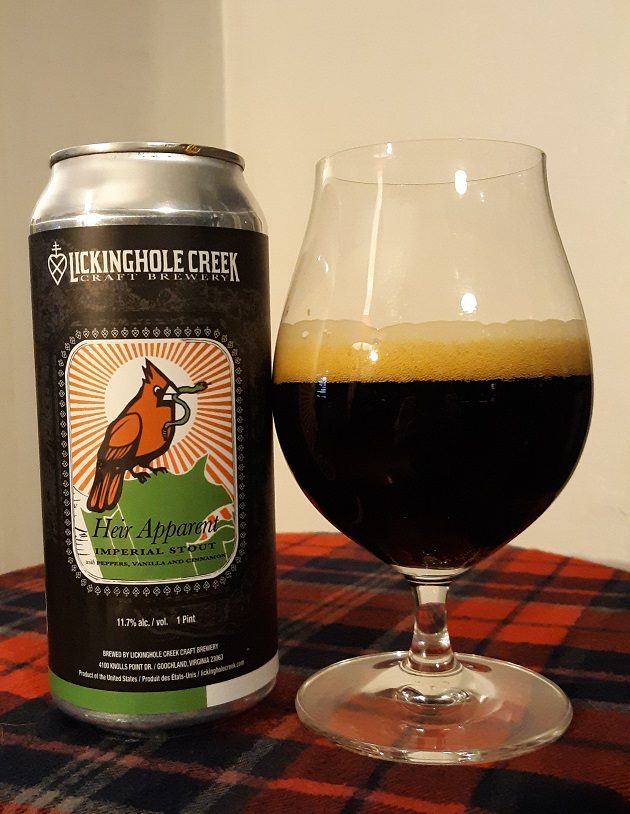
***
Heir Apparent isn’t labelled as a Christmas beer per se, but the can artwork does sport a spiffy red Northern Cardinal (Cardinalis cardinalis) that’ll remind North American birders of the holiday season and wintertime feeder-watching. Well, at least at first glance. A closer look reveals our seemingly sweet little cardinal is clutching a small green rattlesnake in its beak, making the image a little less “Christmas card” and more an obvious sendup of the national coat of arms of Mexico. This emblem, which is centered on the white middle field of the Mexican tricolor, depicts a Golden Eagle (Aquila chrysaetos) perched on a prickly pear cactus. And, like our cardinal, it’s devouring a rattlesnake, an allusion to an old Aztec legend about the founding of their capital Tenochtitlan. As the story goes, the nomadic ancestors of the Aztecs chose the location of their great city – built on an island in Lake Texcoco – after seeing an eagle grappling with a snake atop a cactus, a vision foretold by the god Huitzilopochtli and henceforth memorialized in the national iconography of Mexico.

So, while we can assume this Northern Cardinal is the heir apparent in question, the line of succession this upstart songbird is aspiring to is open to some debate. Heir apparent to what exactly? On one hand, it’s already the official state bird of the Commonwealth of Virginia, the home state of Lickinghole Creek Craft Brewery, just as it is for half a dozen other states, making it the most popular selection nationwide. That’s an impressive résumé of official designations, but could it be that our Northern Cardinal has even greater national ambitions?
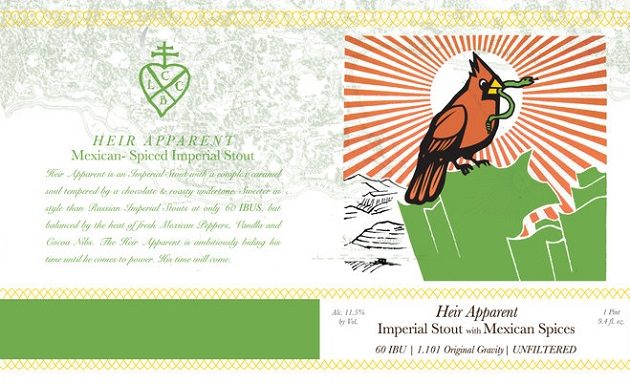
“The Heir Apparent is ambitiously biding his time until he comes to power. His time will come.”: It’s not clear what rank this cardinal is aspiring to. The papacy, perhaps?
Going by the playful artwork of this beer, it seems the plucky cardinal is willing to someday step into the role of national bird of Mexico – an already disputed claim, as it happens. The Golden Eagle may appear on the national flag, but many Mexican citizens consider the Crested Caracara (Caracara cheriway) the country’s official bird, a claim bolstered in 1960 by Mexican ornithologist Rafael Martín del Campo, who identified the “Mexican eagle” depicted in pre-Hispanic codices as this species. It’s a convincing argument, as the caracara – actually a member of the family Falconidae – is far more common in Mexico than any true eagle.

“Listen, ambiguous raptors, sitting on cacti, eating snakes, is no basis for locating an imperial capital.”
While the identity of this iconic but ambiguous Mexican “eagle” may forever remain a mystery, there is at least one Aztec depiction of this raptor, whether it be eagle or caracara, crushing in its talons not a snake, but a small bird, albeit a green – not red – one. In any case, perhaps this gruesome scene might serve as a warning to our heir apparent Northern Cardinal and all other pipsqueak passerine pretenders: back off and leave this battle royale for the spiny throne of national symbolism to the bird birds of Mexico.
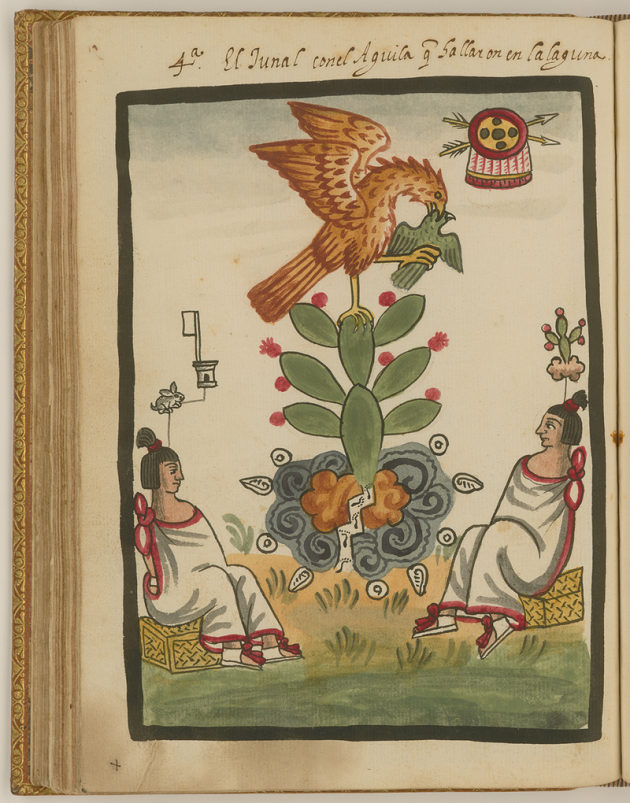
Opportunistic predator: According to this image in the post-Conquest Ramírez Codex, the mythical Mexican aguila has an appetite for birds as well as snakes.
Good birding and happy drinking!
Lickinghole Creek Craft Brewery: Heir Apparent Mexican Spiced Imperial Stout
![]()
![]()
![]()
![]()
![]()
Four out of five feathers (Excellent).












Leave a Comment